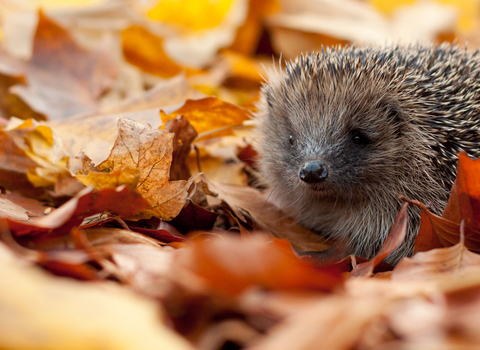Autumn and winter are critical times for our hedgehogs. When preparing for survival over the bleaker months, it pays to be large like the biggest hedgehog we’ve seen in our garden, ‘Hodge’. Smaller hedgehogs may need our help as the cold, clammy fingers of winter approach. Some advice follows on when to intervene, and how.
Our garden hedgehogs
I am fortunate that I can keep an eye on our prickly garden visitors using a wildlife camera that takes photos and short videos. If you don’t have the luxury of a wildlife camera, you may need to do a bit of night-time spying to see who’s there. To find out if you have hedgehogs, look for hedgehog poo or make a footprint tracking tunnel (just like Cornwall Wildlife Trust's Head of Conservation Cheryl did in the video below).






